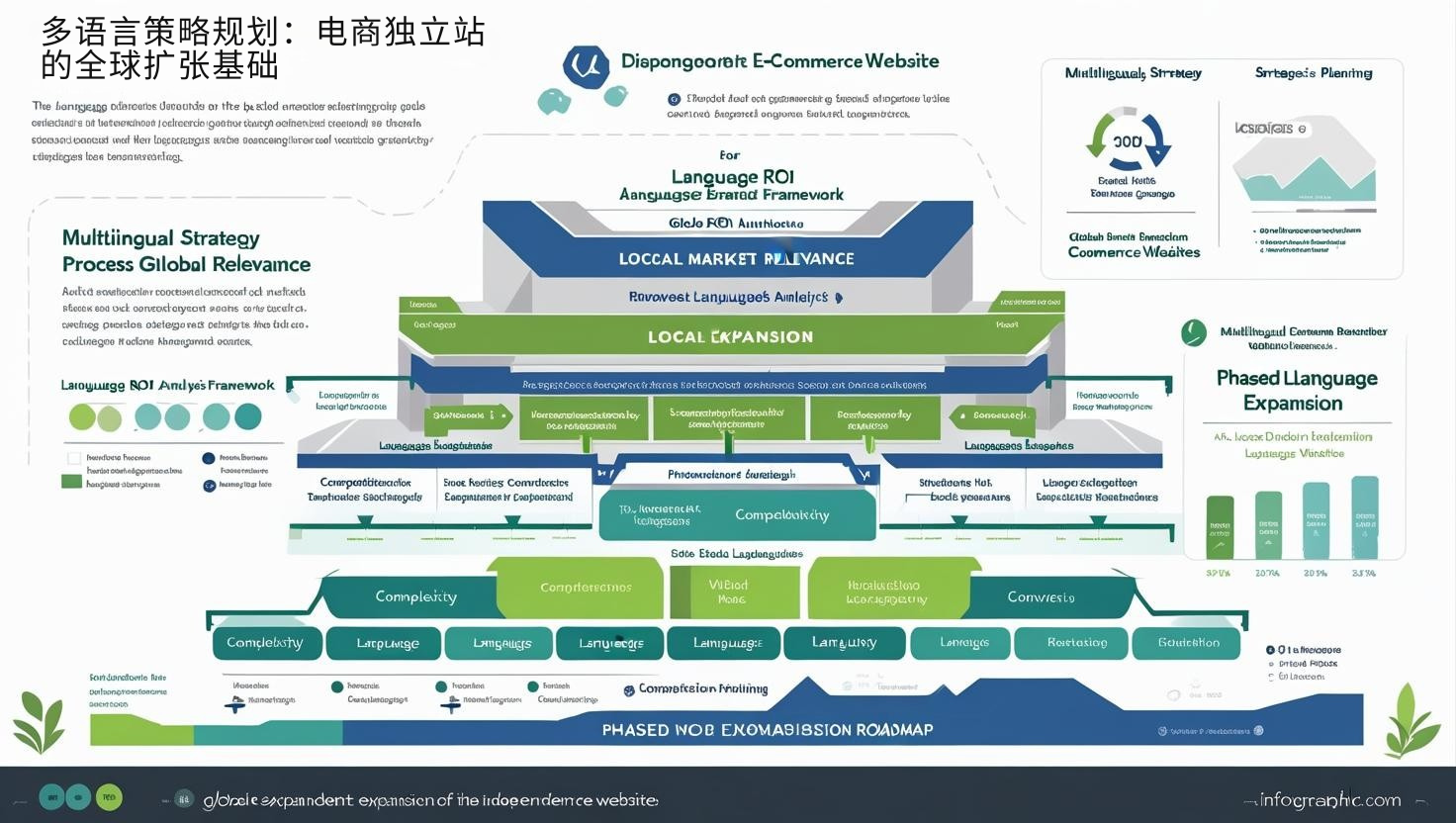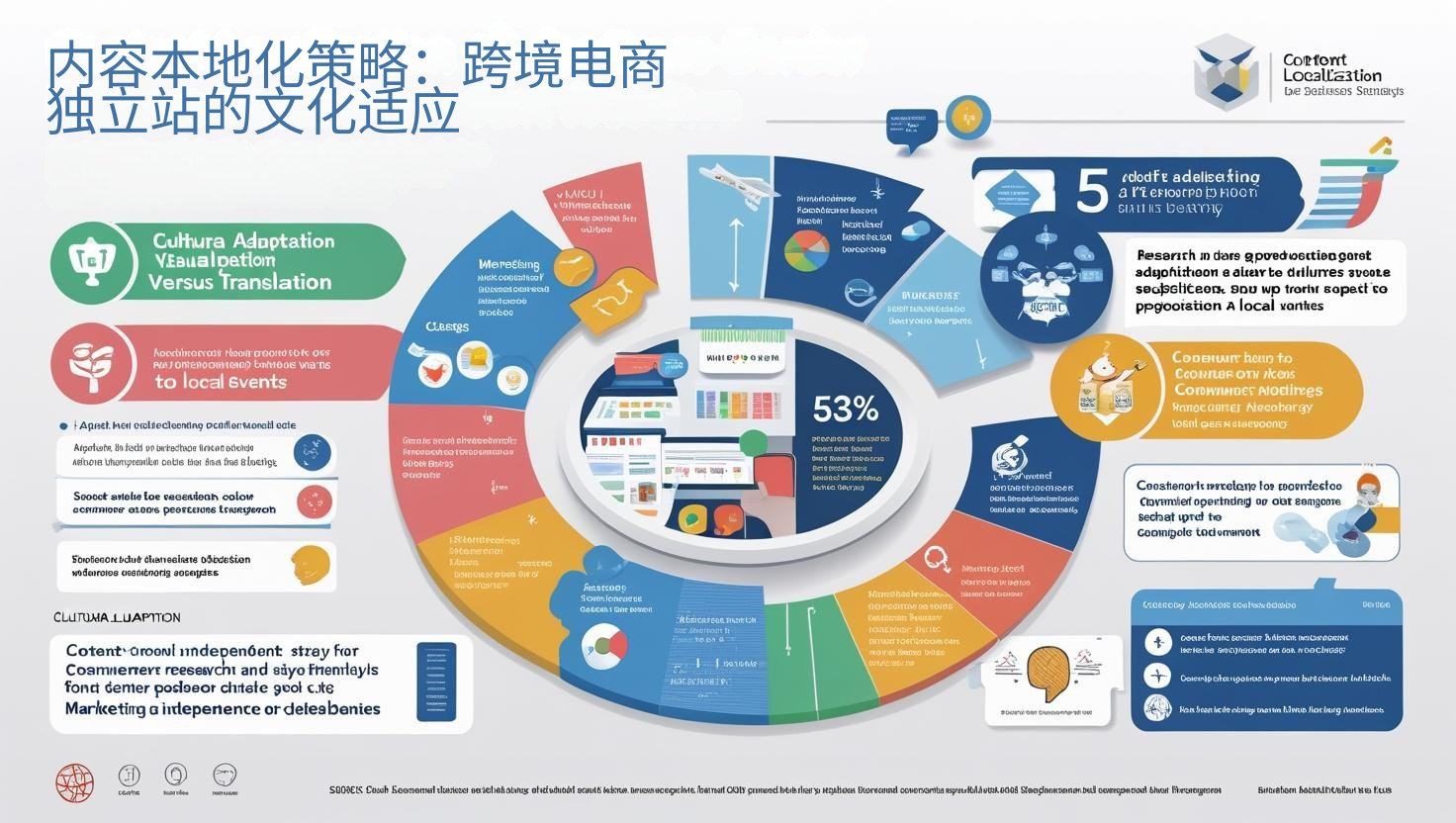 Multilingual Strategy Planning: The Foundation for Global Expansion of Independent E-commerce Websites
Multilingual Strategy Planning: The Foundation for Global Expansion of Independent E-commerce Websites
Language strategy determines market coverage. According to research by Harvard Business Review, a well-planned language strategy can increase international market penetration by 67%, making it a critical prerequisite for global success.
Building an Effective Multilingual Expansion Framework
-
Target Market and Language Priority Analysis: Assess the sales potential and competitive landscape of different international markets; analyze the target audience's language preferences and purchasing power distribution; consider the balance between language coverage and resource investment; examine the synergies between regional language combinations and market clusters; evaluate the differences in language strategies for short-term conversions and long-term brand building; design a phased language expansion roadmap and milestones; and pay special attention to language trends and changes in emerging markets. A data-driven approach is the "Language ROI Analysis Framework," which assesses the return on investment for each language based on market size, competitive intensity, language complexity, and expected conversion rates. Research shows that this approach can increase the efficiency of initial language investments by approximately 42%.
-
Balancing Global Consistency vs. Local Relevance: Create a layered structure of core brand elements and localizable content; design a product strategy that balances global consistency with regional flexibility; consider a regionally differentiated framework for pricing strategies and promotional activities; research the cultural adaptability of user experience and design elements; assess resource allocation between content depth and language coverage; design an organizational structure that balances centralized management with local autonomy; and pay special attention to managing differences in brand perception across different cultural backgrounds. A useful framework is the "Localization Hierarchy Model," which categorizes content into three levels of importance: must-localize, should-localize, and optional. Research shows that this approach can increase localization return on investment by approximately 56% while maintaining brand consistency.
-
Technical Infrastructure and Multilingual Architecture Decisions: Evaluate the pros and cons of different multilingual website architectures (subdomains vs. subdirectories vs. dedicated domains); consider the multilingual functionality and scalability of your content management system (CMS); research translation management system (TMS) integration options and workflows; analyze the technical requirements for multilingual SEO and website performance; evaluate hybrid scenarios for automated and manual translation; design a multilingual data analytics and user behavior tracking architecture; and focus on solutions to the technical challenges of content updates and synchronization. Research shows that choosing the right technical architecture upfront can reduce subsequent multilingual operational costs by up to 63%, making it a critical foundation for long-term success.
 Content Localization Strategy: Cultural Adaptation of Cross-Border E-Commerce Independent Websites
Content Localization Strategy: Cultural Adaptation of Cross-Border E-Commerce Independent Websites
Content localization determines user resonance. According to analysis by the Localisation Industry Standards Association, deeply localized content generates an average of 47% higher engagement and conversion rates than directly translated content.
Creating a Truly Localized User Experience
-
A Deep Localization Approach Beyond Translation: Understand the essential difference between language translation and cultural adaptation; create content adaptation strategies that consider cultural habits and values; design marketing integrations for local holidays, events, and seasonal events; research visual preferences and color psychology across different cultural backgrounds; assess differences in local consumer habits and product usage scenarios; develop a framework for collecting local case studies and social proof; and pay special attention to the cross-cultural translation of humor, metaphors, and cultural references. One practical approach is "cultural mapping," which systematically identifies and adjusts culturally sensitive elements. Research shows that this approach can increase content cultural adaptability by approximately 53%, significantly enhancing user engagement.
-
Localization Prioritization of Key Content Elements: Create a culturally tailored strategy for product descriptions and core sales copy; design a redesigned value proposition tailored to local user pain points and needs; consider regional standard adaptations for dimensions, specifications, and instructions; research culturally nuanced expressions of trust and safety; evaluate regional adaptations to navigation structures and user journeys; design cultural symbolic substitutions for images and visual content; and pay special attention to regional differences in customer service expectations and interaction styles. Research shows that precise localization focused on high-conversion value content improves ROI by approximately 67% on average compared to comprehensive but superficial translation, demonstrating the value of strategic localization.
-
Multilingual Content Creation and Management Process: Establish a coordinated mechanism for international content calendars and local market campaigns; create a content template and component library that supports multiple languages; consider efficient workflows for content reuse and variant management; research content creation cadence differences between primary and secondary languages; evaluate the trade-offs between centralized and decentralized organizational models; design a multilingual content approval and quality control process; and pay special attention to the challenges of synchronizing content updates and version management. An effective framework is the "Content Localization Matrix," which determines the depth of localization based on content type and market importance. Research shows that this structured approach can improve content management efficiency by approximately 43% while optimizing resource allocation.
 Technical Implementation and Optimization: Multilingual User Experience for Self-Built Websites
Technical Implementation and Optimization: Multilingual User Experience for Self-Built Websites
Technical implementation determines the user experience. According to Google research, technically sound multilingual websites achieve an average of 38% higher conversion rates and 53% lower bounce rates than poorly implemented ones.
Building a Seamless Multilingual User Experience
-
Multilingual Technical Architecture and SEO Optimization: Evaluate the SEO impact and management complexity of subdomains, subdirectories, and ccTLDs; establish best practices for URL structure and language tagging; consider the proper implementation of hreflang tags and language metadata; research the multilingual use of content duplication and canonicalization markup; evaluate search engine crawl budget allocation strategies across multilingual content; design multilingual sitemaps and indexing strategies; and pay special attention to the user experience balance of language detection and redirection. A core strategy is the "Multilingual SEO Integrated Framework," which unifies language selection, technical implementation, and SEO requirements. Research shows that this integrated approach can increase multilingual organic search traffic by approximately 57%.
-
User Experience and Language Switching Design: Create intuitive and accessible language selector placement and design; design intelligent integration of language detection, IP geolocation, and user preferences; consider preserving user context and navigation between language versions; research user experience strategies for partially translated content; evaluate localization requirements for multilingual search functionality and filters; design optimized multilingual experiences on mobile devices; and focus on seamless integration of multilingual customer service and support. Research shows that an optimized language switching experience increases cross-language conversion rates by an average of approximately 31% and language exploration by approximately 47% compared to a standard implementation, demonstrating the critical role of user experience design.
-
Performance Optimization and Internationalization Technical Challenges: Analyze the performance impact of global CDNs and multi-region deployments; develop optimization strategies for font loading and localized resources; consider the special handling requirements of right-to-left languages and bidirectional text; research technical solutions for non-Latin characters and special character sets; evaluate implementation approaches for internationalized forms and input validation; design localized display systems for dates, times, and currencies; and pay special attention to regional adaptation of global payment methods and checkout flows. A practical framework is the "Global Performance Map," which optimizes technical implementation for different regions. Research has shown that this regionalized approach can reduce global average page load times by approximately 42%, significantly improving user experience and conversion rates.
 Operation and Maintenance: Continuous Optimization of Multilingual Cross-Border Independent Websites
Operation and Maintenance: Continuous Optimization of Multilingual Cross-Border Independent Websites
Operational optimization determines long-term success. According to Lionbridge analysis, systematically operated multilingual websites achieve an average 73% higher international market share growth than ad-hoc managed websites.
Establish an Efficient Multilingual Operations System
-
Translation Management and Quality Control Process: Design a hybrid strategy for machine and human translation; establish processes for building and maintaining terminology bases and translation memories; consider tiered translation quality requirements for different content types; research efficient workflows for translation review and local verification; evaluate continuous translation versus batch translation operational models; design management strategies for translation cost control and efficiency optimization; and pay special attention to the strategic integration of emerging translation technologies and tools. One effective approach is a "translation tiering system," which allocates translation resources based on content importance. Research shows that this approach can reduce translation costs by approximately 38% while maintaining high quality standards for critical content.
-
Multilingual Data Analysis and Optimization Decisions: Establish a framework for analyzing and comparing cross-language user behavior; create language-specific conversion funnels and problem identification mechanisms; consider the impact of cultural context on data interpretation; research methods for designing regional A/B testing and optimization experiments; evaluate KPI differences and benchmark adjustments across different language markets; design a system for tracking multilingual search terms and content performance; and focus on processes for extracting and applying insights from regional differences. Research shows that targeted optimization based on regional data insights increases regional conversion rates by an average of approximately 45% compared to unified global optimization, demonstrating the strategic value of localized data analysis.
-
International Team and Process Management: Design collaboration models and responsibilities between central and local teams; establish a management system for multilingual content calendars and release coordination; consider the balance of resource allocation between global and local activities; research unified management of multilingual customer support and service standards; evaluate mechanisms for monitoring and adapting to international regulations and compliance requirements; design channels for cross-regional knowledge sharing and best practices; and focus on managing the impact of cultural differences on team collaboration. A successful framework is the "core-satellite team model," balancing centralized control with local autonomy. Research shows that this organizational structure can improve multilingual operational efficiency by approximately 53% while enhancing local market responsiveness.
In today's increasingly competitive global market, building a truly balanced multilingual e-commerce website that combines internationalization and localization has become a critical factor in cross-border success. Through strategic language planning, in-depth content localization, comprehensive technical implementation, and systematic operational management, companies can create a global e-commerce presence that maintains brand consistency while respecting local characteristics, achieving true global reach and local resonance. The key is to view multilingual strategy as a core component of the overall business strategy, rather than simply a translation project. Through continuous optimization and adjustment, companies can maintain a competitive advantage during global expansion.
Related article recommendations: https://pinshop.cn/zh-Hans/blog/what-is-independent-site-for-business







